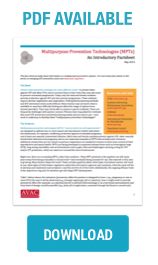- About UsOur Story, Our Team & Support Information
- What We DoAdvocacy to Achieve the End of AIDS
- Advance HIV/SRH Integration
- Advocate for Access to High-Impact Prevention
- Improve Research Conduct
- Product Innovation & Availability
- Promote Effective HIV Prevention Policy
- Strengthen Global Advocacy Networks
- Track and Translate the Field
- Our FocusInterventions to End the Epidemic
- ResourcesPublications, Infographics, Events & More
- MediaInformation & Resources for the Press
- Our BlogPrevention News & Perspective
For more basic fact sheets in this series on emerging HIV prevention strategies visit www.avac.org/intro.
The Need
People need a variety of prevention strategies for different sexual and reproductive health (SRH) needs. For decades, women have asked for methods that they have control over and that address multiple SRH needs, such as HIV and unwanted pregnancy. Men who have sex with men and transgender individuals have also advocated for products that prevent multiple sexually transmitted infections (STIs), including HIV.
Products that are designed to address more than one SRH concern simultaneously are known as multipurpose prevention technologies (MPTs). Male and female condoms—which protect against pregnancy as well as HIV and other STIs—are the only MPTs available today. Condoms are effective when used properly, but a number of challenges stand in the way of correct and consistent use. Condoms require partner cooperation to use, some people don’t like the way they feel and they are not an option for women who wish to become pregnant while protecting themselves against STIs.
The Products
There are at least 28 distinct MPTs in development, most of which are in early stages of research. A diverse pipeline of MPTs is an important step towards providing all individuals with options to meet their SRH needs as they change across the lifetime. This includes a variety of product indications (health issues the MPT is designed to prevent) and methods that are systemic (provide protection throughout the body) and non-systemic (provide protection in one body part without affecting the rest of the body).
The MPT furthest along in the research process is the Dual Prevention Pill (DPP)—a daily oral pill for HIV and pregnancy prevention in cisgender women. The DPP is co-formulated with oral tenofovir disoproxil fumarate with emtricitabine (F/TDF) for pre-exposure prophylaxis (PrEP) and levonorgestrel (LNG) and ethinyl estradiol (EE), a combined oral contraceptive. F/TDF for PrEP and LNG/EE are already approved for use in many countries, and ongoing testing will determine if they are as safe and effective in combination as the DPP as they are separately. If the DPP exhibits comparable safety and efficacy, the product developers will seek approval from regulatory authorities.

*Adapted from: The Initiative for MPTs (IMPT); Treatment Action Group (TAG) 2020 Pipeline Update. More information on MPTs in active development is available on the IMPT product development database.
Vaginal rings are small, flexible rings placed in the vagina and are already familiar to some women as a contraceptive method, known as the NuvaRing and Annovera. Several trials are currently testing MPT vaginal rings, with two MPT rings in Phase 2 trials. One of these rings combines tenofovir (TFV) and LNG, intended for 90-day continuous use to prevent HIV and pregnancy. The other contains TFV only, designed for 90-day continuous use to prevent HIV and herpes simplex virus type 2 (HSV-2). In a Phase 2a trial, both the TFV/LNG and TFV ring were shown to be safe and exhibited markers of protection against HIV and pregnancy and HIV and HSV-2, respectively. The Dapivirine Vaginal Ring (DVR)—a dapivirine-containing silicone ring intended for 30-day continuous use to prevent HIV—is not an MPT in its current form, but successful introduction can pave the way for ring-based MPTs to move forward. The DVR is expected to be available by mid-2021 in some African countries where research took place and public health need is high.
MPTs that prevent HIV and other STIs are important for people who engage in vaginal and/or anal sex but do not have a need or desire to prevent pregnancy. These options are critical given persistently high rates of HIV and other STIs observed in clinical trials across a variety of populations and settings. Products in the pipeline designed to prevent anal transmission of HIV and other STIs include an enema and rectal gels and inserts. One example is PC-1005 rectal gel—an on-demand topical gel meant to protect against HIV, HSV-2 and human papillomavirus (HPV). A Phase 1 trial of PC-1005 has been completed with no safety concerns, but data point to a need to reformulate the gel to be longer-acting in future trials. Vaginal MPTs that protect from HIV and other STIs are also needed, and those in development include rings, gels, an insert and a film.
Effective, affordable and widely accessible MPTs would save lives and money, improving the health of communities around the globe. Advocacy is crucial to mobilize resources and broad support through all stages of MPT research and development, and to ensure access to products as they become available.
Last edited April 2021.